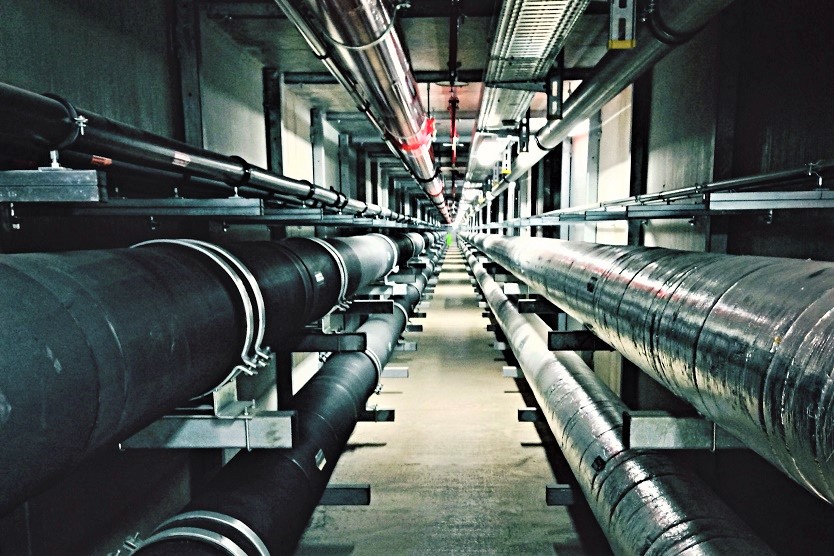A closer look: Local and district heating networks
To ensure an efficient heat supply, local and district heating networks as well as heat stores are needed, especially for applications and processes with high temperatures for industrial sites. This also applies to the supply of densely populated metropolitan areas.
Heating networks can help boost efficiency in the energy supply, in particular by using combined heat and power plants or by using unavoidable industrial waste heat as heat sources.
In addition, sector coupling technologies such as power-to-heat can be used to maximise the use of existing infrastructure and energy from renewable sources for an efficient and climate-friendly energy supply (see sector coupling technologies).
Heating networks
Heating networks are used to transport and supply heat, cold or steam. Depending on their reach, they are categorised either as local or district heating networks. They usually connect several heat sources with several consumers via underground pipelines or overhead lines.
Using the heat sources or heat generator, a heat transfer medium is heated to a certain temperature and transported to the consumer via the pipeline system by means of pumps. The heat transfer medium is usually water or steam.
At the consumer site, the heat transfer medium is either used directly via heaters or transferred via a heat exchanger to a second heat transfer medium, which can then be circulated and used for various heating purposes within an object like a building, for example. In both cases, the heat transfer medium cools down and is returned to the heat source in the heating network, where the cycle is repeated.
Depending on the field of application, type and number of consumers connected to the heating network and their distance from one another, the heating network must be able to meet a certain demand for heat and also guarantee a particular temperature level for heat transport.
Especially high temperatures are achieved, for example, during heat generation in fossil-fuel heat stations or cogeneration plants and are needed for process heat supply in industry. Low-temperature sources that are used within bidirectional heating and cooling networks are, for example, the waste heat from industrial processes and the heat generated from renewable energy systems such as solar collectors, biogas plants or near-surface geothermal collectors.



